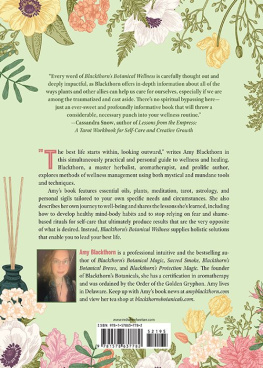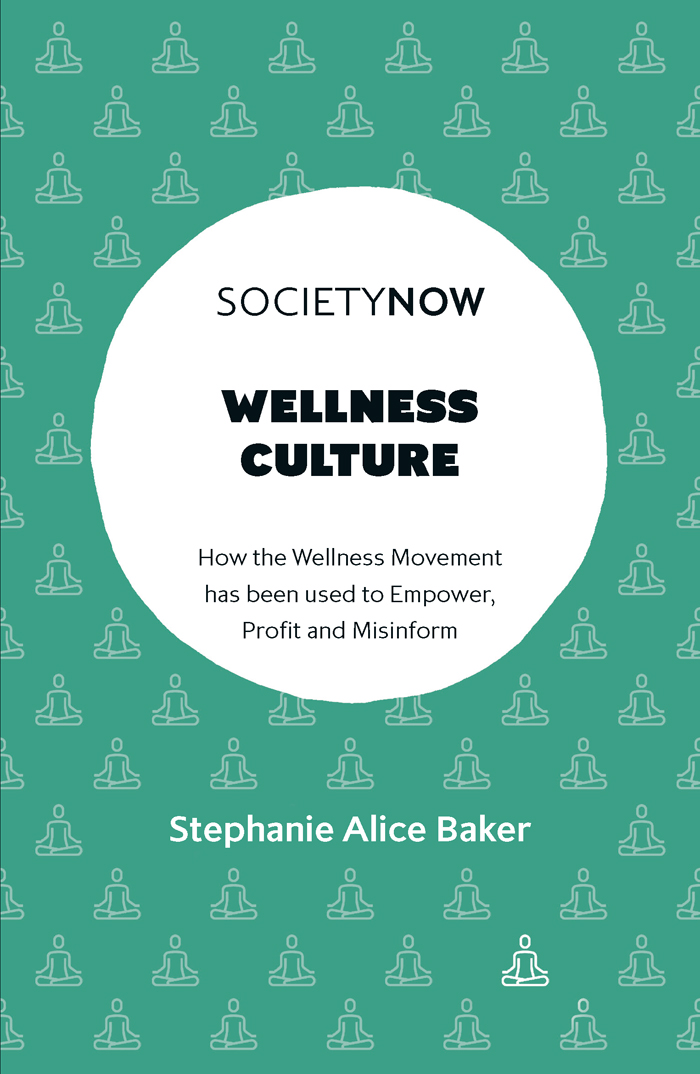WELLNESS CULTURE
How the Wellness Movement has Been Used to Empower, Profit and Misinform
BY
STEPHANIE ALICE BAKER
City, University of London, UK

United Kingdom North America Japan India Malaysia China
Emerald Publishing Limited
Howard House, Wagon Lane, Bingley BD16 1WA, UK
First edition 2022
Copyright 2022 Stephanie Alice Baker.
Published under exclusive licence by Emerald Publishing Limited.
Reprints and permissions service
Contact:
No part of this book may be reproduced, stored in a retrieval system, transmitted in any form or by any means electronic, mechanical, photocopying, recording or otherwise without either the prior written permission of the publisher or a licence permitting restricted copying issued in the UK by The Copyright Licensing Agency and in the USA by The Copyright Clearance Center. Any opinions expressed in the chapters are those of the authors. Whilst Emerald makes every effort to ensure the quality and accuracy of its content, Emerald makes no representation implied or otherwise, as to the chapters' suitability and application and disclaims any warranties, express or implied, to their use.
British Library Cataloguing in Publication Data
A catalogue record for this book is available from the British Library
ISBN: 978-1-80262-468-7 (Print)
ISBN: 978-1-80262-465-6 (Online)
ISBN: 978-1-80262-467-0 (Epub)
For Viola, Juliette and Clara.
CONTENTS
List of Illustrations
| Chapter 2 |
| Medical Committee for Civil Rights at the March on Washington, 1963. National Library of Medicine #c05461. |
| Chapter 3 |
| Travis' Illness-Wellness Continuum. |
| Chapter 4 |
| A Wellness Guru's Conversion Story. |
| Chapter 5 |
| The Intersection between Wellness Culture, Conspiracy Theories and New Age Spirituality. |
| The Persecuted Hero Narrative. |
| The Purity Paradigm. |
Preface
It has been over six decades since Halbert L. Dunn wrote the book High-Level Wellness, which inspired the wellness movement in the United States in the 1970s. While many of the philosophies and practices associated with wellness culture today have a much longer history, it was in the mid-twentieth century that the idea of wellness as a concept and a lifestyle began to assume cultural significance in America before transferring to other parts of the world. Wellness culture coalesced around several core principles that were seized upon by marketers in the late twentieth century to advertise wellness as a consumer product. Today, the wellness industry is comprised of a series of products and services that bear little resemblance to the vision endorsed by the pioneers of the wellness movement in the 1970s. The top internet search results for wellness in early 2022 include a wellness journal, a wellness hamper and wellness dog food!
At the dawn of the COVID-19 pandemic, wellness transmuted again. In 2020 and throughout much of 2021, wellness became a gateway to misinformation. An aspirational term once associated with health and vitality came to signify deception, conspiracy and political extremism. For some, wellness has always been conflated with misinformation; alternative medicine perceived to be a synonym for pseudoscience and quackery. The modern lifestyle brand, Goop, for example, is routinely criticised for peddling pseudoscience, selling a range of controversial products under the rubric of wellness including Jade (Yoni) Eggs to harness the power of energy work and Psychic Vampire Repellent, an essential oil designed to spray around the aura to protect from psychic attack and emotional harm. Goop's celebrity founder, the Hollywood actress turned wellness guru, Gwyneth Paltrow, reveals the impact of celebrity culture on ideas about health, wellness, beauty and happiness. Many of the questionable healing modalities associated with wellness culture today were popularised in the 1800s: mesmerism (hypnosis), homeopathy, hydrotherapy, magnet therapy and chiropractic. While these alternative medical treatments emerged in response to people's disillusionment with medicine at the time, the treatment paradigm within which they operated is fundamentally different to the vision of wellness proposed by the pioneers of the wellness movement in the 1960s and 1970s. This book seeks to disentangle these vast, and often contradictory, conceptions of wellness by tracing the historical emergence of wellness from a fringe countercultural pursuit to a mainstream cultural phenomenon and consumer product.
While many of the practices associated with wellness culture today have their origins in the Global South, the conception of wellness as a lifestyle and a commodity is inexorably bound to the Global North, in particular the United States. As a result, much of the analysis of wellness culture in this book will focus on the United States, demonstrating how particular social, economic, political and technological conditions in North America have contributed to the cultural preoccupation with wellness today. The proliferation of digital devices and social media have transformed the ways in which knowledge about wellness is produced, disseminated and consumed, rendering wellness more accessible to internet users and giving rise to a series of self-appointed wellness gurus, who use these technologies for social, economic and political gain. At the same time as extending the global reach of wellness culture, digital technologies introduce new hierarchies and inequalities structured around commercial and corporate interests. The relatively unregulated nature of the internet also makes wellness information online, and the global audiences who consume it, more susceptible to misinformation, disinformation and conspiracy. Today, the wellness market is a global industry that combines eastern mysticism and modern psychological ideas about the self with digitisation to shape physical bodies across time and space. However, despite drawing on traditional eastern medicine and philosophy, the growth of the wellness industry in late capitalism is an American phenomenon. Hence, the focus of this book is on America, exploring the foundations of the wellness movement in post-war America to the present day, while acknowledging that the movement draws on historical events, philosophies and ideas from various cultural contexts and has transnational significance as a global industry.
Wellness practices have been subject to cultural appropriation, often bearing little resemblance to their traditional cultural origins. Take yoga, for example. Given the popularity of yoga in America, and around much of the western world, one might assume that the practice is central to Indian culture. As a postdoctoral researcher residing in India in 20092010, I was struck by the relative absence of yoga studios in Mumbai at the time. When I eventually found an ashram offering yoga, the practice bore little similarity to the physical asanas (postures) that have come to define the practice of yoga in the West. This was in stark contrast to Dharamsala, a Himalayan region in the north of India, which catered to many westerners in pursuit of wellness and eastern spirituality, and where I completed my yoga teacher training in 2010. This personal experience illuminated that while the global wellness industry draws on ancient philosophies and practices, these have been appropriated and repackaged as products and services in western contexts to meet a specific consumer demand. The same critiques have been made towards the incorporation of Buddhist practices in the workplace, which tend to frame mindfulness and meditation instrumentally as productivity tools designed to optimise work performance, using scientific language and statistics to prove their efficacy and give these philosophies legitimacy among secular audiences, but in the process stripping these religious practices of much of their cultural and ethical significance. These observations highlight the need to refrain from presenting wellness culture as a direct continuation of ancient traditions. The ways in which traditional Buddhist and Hindu practices, such as yoga, mindfulness and meditation, are used as contemporary wellness tools and therapeutic interventions to help individuals actualise their potential speaks more of the cultures in which they have been appropriated than the context in which they originated. This is especially the case with New Age spirituality, which is characterised by an eclectic mix of eastern and western beliefs and practices.














